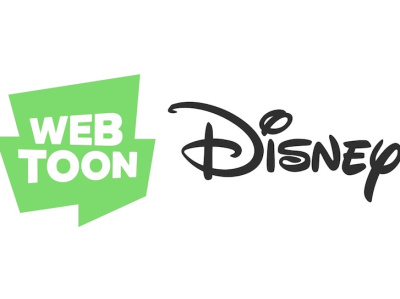The year 2000 was hardly a banner year in the American toy industry; the two giants that dominate the American toy market, Mattel and Hasbro, each suffered setbacks. In addition to a major financial hangover from its binge of acquisitions, Mattel lacked any real hits, while Hasbro took a big hit in the form of returns from Star Wars Episode I merchandise. So quite naturally, the big two are retrenching, streamlining their organizations and cutting back on their participation in the annual New York Toy Fair. Mattel gave up its building and is now using a showroom in the Toy Center building. Hasbro is still exhibiting in its own building on W. 23rd Street, but says that this year will be the last for a totally Hasbro venue. In an article about the future of Toy Fair, The New York Times took the pessimistic point of view and wondered if the future of this venerable trade show might be in doubt. It is true that the big retail toy chains do their buying before toy fair, but the international sales and national publicity that the New York Toy Fair generates are too important to ignore. The big two may cut back, but they will maintain a presence.
In fact, bad times for the big two can mean good times for medium size companies willing to innovate and compete aggressively. According to Toy Book, toy sales for last year amounted to some $20 billion wholesale (not including video games), a solid figure except that it was spread out over an increasing number of skus. Some medium size toy companies are clearly prospering and their profiles are considerably higher than in past years. Todd McFarlane, whose company consistently ranks among the top five action figure manufacturers, knows what collectors want and how to give it to them, raising the bar for quality, detail and value for the entire category. The others may be catching up, but they haven't quite gotten there yet. This year's biggest-ever lineup of McFarlane Toys includes everything from a second superb series of figures from classic anime to figures of Jim Morrison, Jerry Garcia, and Metallica. In addition to going after these niche markets, Todd has had the temerity to take on Hasbro/Kenner and its widely distributed Starting Lineup sports figures (see 'Todd Ups the Ante') and to compete in the mass market with licensed figures from the new Dreamworks animated film Shrek.
McFarlane Toys has established its position in only seven years, but the rise of Irwin Toys is even more meteoric. A few years ago Irwin was just a 'minor' Canadian toy company, but now thanks to the Dragonball Z master toy license they have an impressive presence in New York and the sales to match. While McFarlane Toys innovated in design, production, and targeting the collector market, Irwin picked the right horse in the licensing derby. Bandai America originally had the DBZ license, but when the property was slow taking off, they dumped it. Diamond Comic Distributors was offered the license, but they, and several other companies, declined (which is probably all for the best since Diamond has put its best efforts into securing toys direct from Japan at a reasonable cost, a feat that no one had managed before). With its current popularity on the Cartoon Network where DBZ's ratings double its closest competitors, Dragonball Z gives Irwin a solid spot in the mass market.
In addition to Irwin and McFarlane Toys, there is an increasing number of small to medium size companies creating an ever increasing number of action figures. It's as if the market for action figures hasn't so much declined as fragmented. Here are a few quick observations about the offerings at this year's show:
Action figures are better than ever. New techniques have raised the quality of action figures to new heights. Images of actors from licensed films are laser scanned resulting in highly accurate likenesses. The Toy Biz action figure of Frodo from Lord of the Rings really looks like Elijah Wood. The McFarlane Toys figure of Warren Sapp from its NFLPA series is also a superb likeness. In addition manufacturers have managed to create an increasing number of points of articulation, which allows for an incredible variety of poses. Toy Biz's latest 5' Spider-Man figure has an amazing thirty points of articulation.
Formats are proliferating. The number of toys targeted at collectors continues to increase, and companies have moved beyond articulated figures to create a dizzying array of resin statues, busts, bookends, and banks. Meanwhile, in addition to the normal 5' action figures there is an increasing number of larger 12' to 20' jumbo figures, while conversely some companies are also experimenting with mini-formats similar to the Japanese 'Kubricks.'
Robotics are growing. Welcome to the world of robotic dogs, cats, birds and even lizards. Thanks to the by now commonplace voice recognition chips, talking figures don't just yap, they respond to commands with up to 15-25 different replies depending on their 'electronic' mood.
Licensing is still key. Despite all the pious pronouncements about getting back to the basics of creating a toy that is fun to play with because of its intrinsic nature, the action figure category remains almost completely dependent on characters licensed from television, films, books, or comics. While next year's lineup of film properties with Star Wars Episode 2, Spider-Man, and the second X-Men film appears to be stronger, this year's does provide some opportunities including: The Mummy Returns, Shrek, Atlantis, Tomb Raider, Planet of the Apes, Monsters, Inc., Harry Potter, and The Fellowship of the Ring. The Ring trilogy in particular (see 'LOTR Drives Web Traffic') appears to have potential thanks to its schedule of one film per year for the next three years. Punctuated as it will be at 6-month intervals with a video/DVD release, the schedule should keep the Ring films in the public consciousness continuously.







